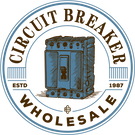What Causes Fire in Electrical Outlets?
Fires on electrical outlets often happen around the holidays when electrical outlets begin putting on extra weight. Some homeowners overload their electrical outlets during the holiday season. For example, one may attach strings of light for the Christmas tree, electric candles, home surround systems with holiday music, and for some reason, even a grill. Some homeowners load their electrical outlets so much that it seems simply staring at all the cords running from the outlets can give it the energy boost to cause a fire.
More than 5,000 American households catch fire each year due to overload of electrical outlets. Almost half of these fires occur during the holiday season. This got many homeowners to wonder, just how much overload can cause a fire? The answer to this question is a simple “it depends” because there are many factors that can make a difference.

Electrical Fires
There are various steps you can take to reduce risks of electrical fires, especially during the holiday season. First, calculate your electricity usage and the average load that your electrical outlets can handle. Eliminate all fire hazards including faulty wiring and bad products that could explode or cause fires.
Each year, dozens of counterfeit electrical products make it into the shelves of legitimate stores all over the U.S. Most of these products simply are not designed for use on standard domestic electrical outlets.
Holiday Safety Tips
Although it is disheartening that electronics stores in the U.S. sell uncertified products, it does happen. Fortunately, there are various organizations in the U.S. that are dedicated to keeping dangerous products out of your home.
Some of the most recognized certifying bodies in the U.S. include Underwriters Laboratories and Factory Mutual. These independent bodies test electrical products to determine if they are safe for use in homes. Products that pass their comprehensive tests are certified and attached with labels. It is important for consumers to look for safety labels in products when shopping for electrical devices.
In addition to checking for safety labels when purchasing electrical devices, the Electrical Fire Safety Foundation International suggests that consumers should avoid purchasing extension cords and circuit breakers from deep-discount stores. It is also important to look for name brands that you trust and recognize when buying electrical products. Check labels when purchasing electrical equipment. Spelling and grammar errors on product labels could be a sign that the products were produced by disreputable companies.
Difference between two- and three-pronged plugs
The main difference between two and three pronged plugs is that the latter is more effective in guarding against electrical shock. A normal 120-volt outlet consists of two vertical slots and a round hole at the center. The slot on the left is usually larger than the one on the right. The left slot is the neutral, the right slot the hot, and the center slot is the ground. The three prongs should fit perfectly in a standard electrical outlet.
Power in a normal electrical outlet flows from hot to neutral. The electrical appliance plugged into your outlet completes the circuit from the hot slot to the neutral one. Once plugged in, electricity flows through to power the appliance.




